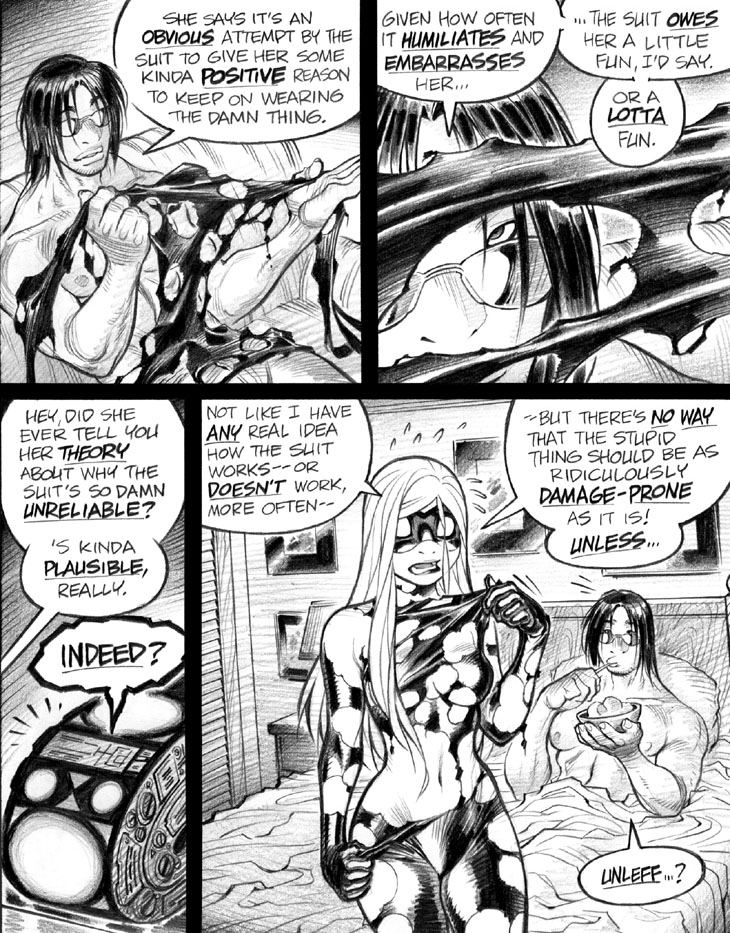The following is a recent comics-related Twitter rant of mine, reformatted into slightly easier-to-read paragraph form for your reading convenience. Er, enjoy, I guess?
So, this is “a subtweet comic critique” of an unidentified recent comic, as well as a book from earlier in 2016 with similar problems. The issue: Comics storytelling spoiled by disjointed, isolated shots that don’t cohere into a clear sense of narrative & spatial geography. This lack of geographical clarity on the artist’s part can hamstring a comic’s dialogue scenes just as badly as it hinders an action scene.
One of the two books, which I’ll call “Comic A,” shows how both “talky” and “action-y” sequences can come unglued if the artist doesn’t keep clarity in mind. A conversation scene that kicks off this book is unstrung by the artist not drawing a “master shot” establishing the character’ positions. The dialogue tells me that these characters are in the same scene, but I couldn’t prove that purely from the artist’s visual storytelling.
Panel 1: Hero A talks (close-up). Panel 2: Hero B replies (close-up). Need a shot before or after to show they’re in the same g-d room. The closest we get to interaction is a voiceover by Hero A, whose word balloon pops in from off-panel—or “off-screen,” in film terminology. Gotta be wary about using a dialogue “voiceover,” though, without ever showing an establishing shot emplacing all the scene’s characters.
Rule of thumb: A comic artist’s pages should be at least SEMI-readable without dialogue, conveying a straightforward sense of visual storytelling. Before the lettering’s added, an artist’s pages should establish basic concepts—such as where the characters are in relation to each other. You might not know exactly what’s at issue in the (eventual) word balloons, but simple questions about the scene should be clearly answered.
Side note: An artist’s use of facial expression, gesture, body language should convey the tone of a conversation, even without dialogue. Ask yourself: “Could the writer slap any ol’ dialogue her or she wants in this panel?” If so, the artist is probably screwing up.
As I’ve often opined, I dislike the visual trope of artists showing only the back of a character’s head while she’s delivering dialogue. IMHO, comics artists should err on the side of “acting” by showing the face of a speaking character as a “default setting” in one’s artwork. Ah, but at least the faceless “back of the head shot” can be used to show that the speaking character is in the same scene as everyone else. A “back of the head” character view works MUCH better than an unseen voiceover from off-panel to establish a scene’s spatial relationships.
Well, that’s the end of part 1 of this long-ass, ramblin’ramblin’ramblin’ Subtweet Comics Critique; part 2 rolls onward with our next Empowered page. See ya!
-Adam Warren

